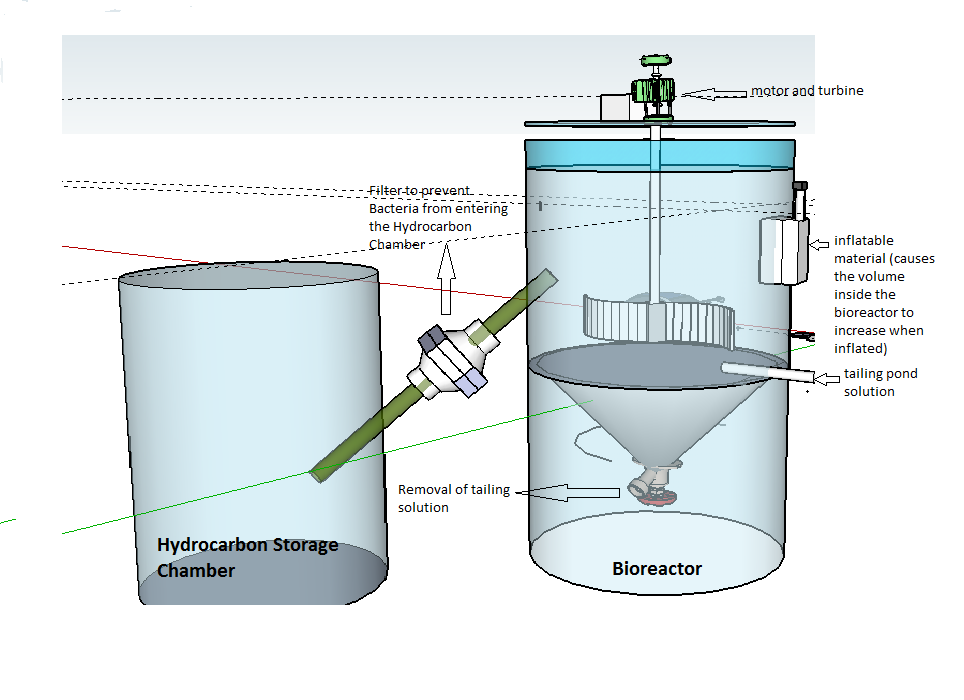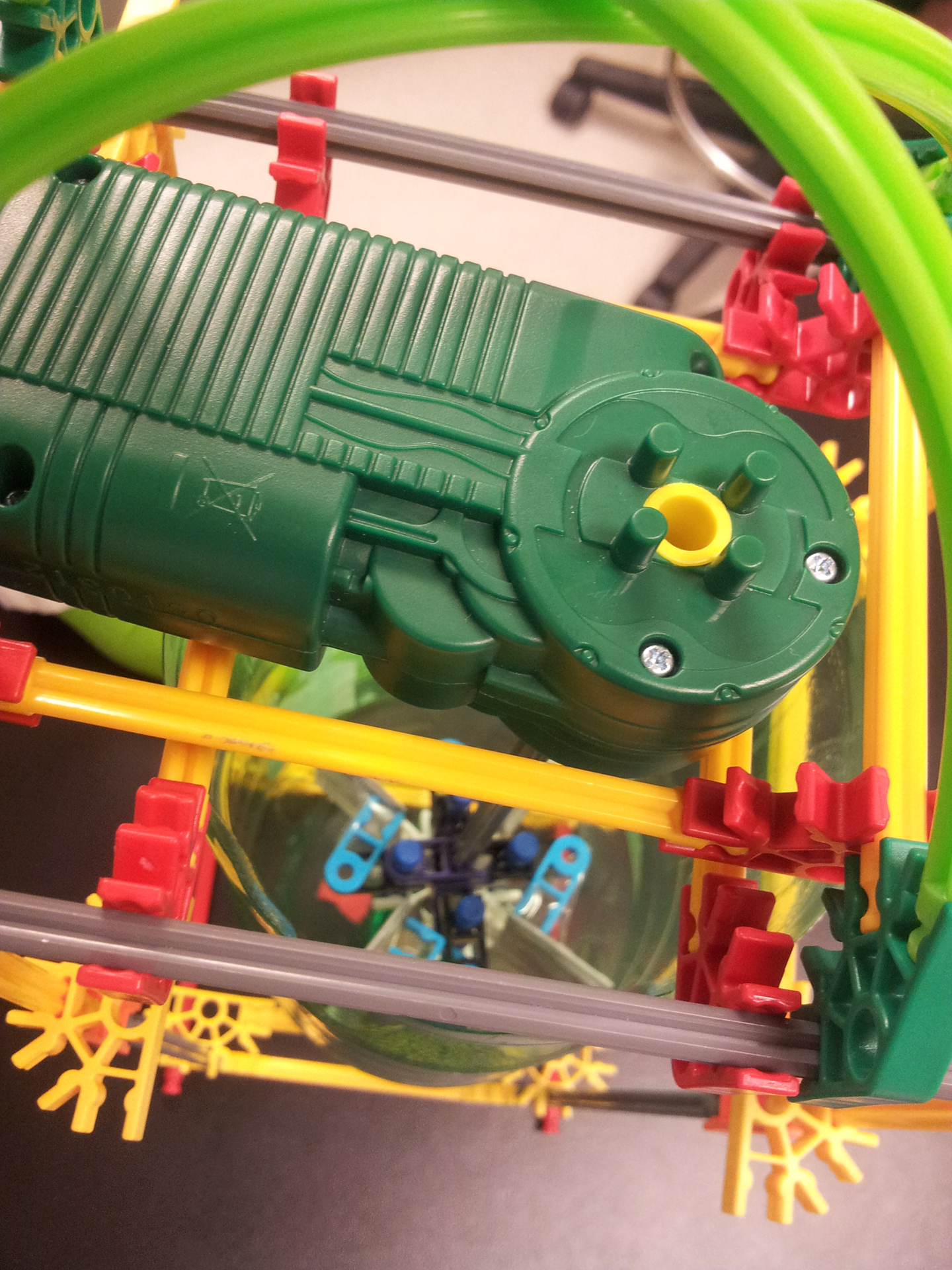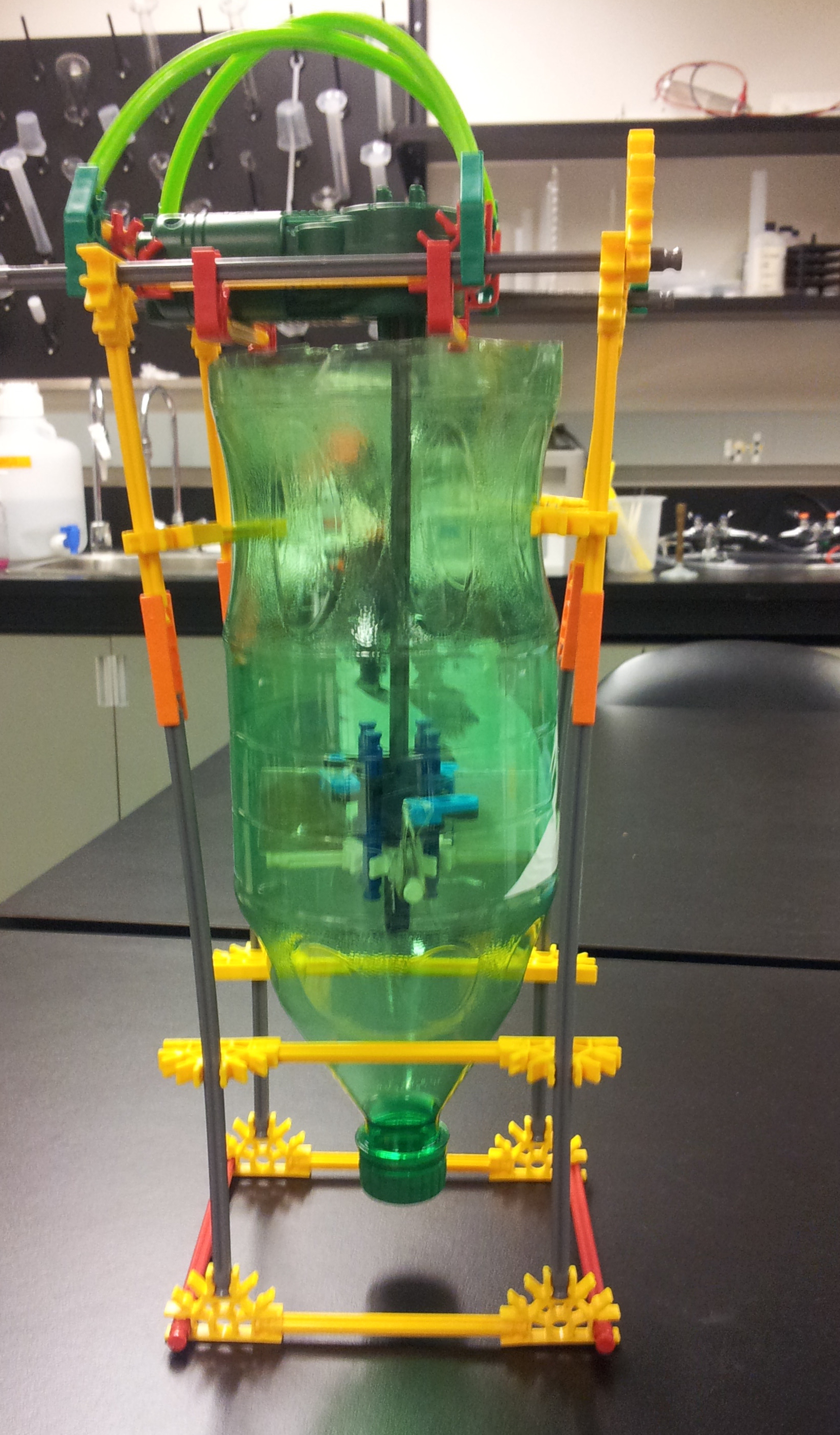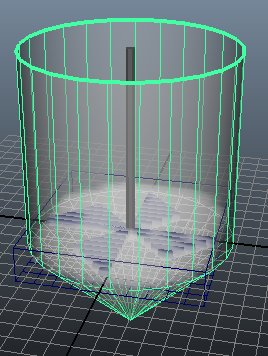Team:Calgary/Notebook/Bioreactor
From 2012.igem.org


Hello! iGEM Calgary's wiki functions best with Javascript enabled, especially for mobile devices. We recommend that you enable Javascript on your device for the best wiki-viewing experience. Thanks!
Bioreactor Notebook
Week 1 (May 1-4)
Successfully completed both WHIMS and Biosafety level one training which provided us with training to ensure we are conducting laboratory work in a safe manner.
Week 2 (May 7-11)
We began reading papers on Bioreactors to get a better understanding of the different types of Bioreactors and filtration methods. We were considering the use of either a dynamic membrane filter or a micro filter. There is still much we need to learn about Bioreactors.
Week 3 (May 14-18)
This week we looked into ways to remove the floating hydrocarbon layer (produced by the bacteria from Naphthenic Acids) in a Bioreactor. Some methods included a vacuum skimmer with a rocker, a vacuum with a mesh, and even exit chambers. To learn more about current Bioreactors and considerations that should be made in their design we borrowed books on Bioreactor designs from the university library. We began reading them and also started to research cream separation techniques, which was suggested to be a good model for out project. This process could work however centrifuging highly toxic tailing pond liquid doesn’t seem feasible due to the energy requirements. In addition the hydrocarbon layer would naturally separate from the tailing pond solution being less dense and hydrophobic.
Week 4 (May 14-18)
We began to learn Google Sketch-up and modeled the Bioreactor using it(shown below). The program allows three dimensional modeling and will allow us to clearly see and edit the Bioreactor as we make changes to the proposed design. We began looking ways to control and monitor the ph, temperature, and oxygen levels in a Bioreactor and also how to determine the hydrocarbon layers position in the bioreactor. On Friday we had a meeting with Dr.Sen, a professor in Chemical Engineering who has worked with Bioreactors, he suggested we look to model our own process on preexisting methods and suggested a wastewater treatment plant as a viable model.
Week 5 (May 28-June 1)
We spent the early part of the week researching how oil companies separate hydrocarbons from crude oil. The intent of this research was to see if a process in commercial use could be used to help extract the hydrocarbons efficiently from our bioreactor system. One method found was a process called fractional distillation. This process is used most commonly in oil refineries to separate each type of hydrocarbon from a mixture of crude oil. The mixture is fed into a furnace where it is converted into vapor. As the vapor rises up a long column, hydrocarbons condense at different heights onto special trays depending on their boiling point. The separated liquid hydrocarbons are then transported out of the system via pipes. Another method we came across was the use of oil skimmers used to clean up oil spills. Special hydrophobic material attached to a conveyer belt collects the oil and transports it out of a body of water. This hydrophobic material was ordered online to prototype the oil skimming method with our bioreactor. In addition, we worked on learning how to use Maya, a computer modeling and animation program. We will use this program to create an animation showing the function of our bioreactor, which will be used in the iGEM competition.
Week 6 (June 4-8)
We continued working through online Maya tutorials to help design an animated clip showing the function of our bioreactor. On Tuesday, June 5th, we were given a tour of the Bonnybrook Wastewater Treatment Plant. This gave us the opportunity to observe and learn the cleaning techniques used by this plant. One of the more interesting techniques we observed was the use of UV radiation as a final cleansing method. This inspired us to include the use of UV radiation as a possible method to ensure that our bacteria do not escape the bioreactor system. In addition, during the team meeting on Friday, June 8th, Iain mentioned the possibility of using ozonation to kill the bacteria rather than UV radiation.
Week 7 (June 11-15 )
During the week we continued to work through the Maya tutorials. We broke up our group to work on learning different aspects of Maya, so we can speed up our progress.
Week 8 (June 18-22)
We completed all the fundamental Maya tutorials! We modeled our Bioreactor prototype and animated a rotating turbine into it. We are currently in the process of modeling the oil skimmer and animating all the parts. This week we presented our project and our future goals to our iGEM Calgary team including our supervisors and faculty mentors. Our current goals for the Bioreactor project are to create:
1) 3D animation of the Bioreactor 2) Blueprint for the Bioreactor design 3) A working model of extracting floating hydrocarbonsWeek 9 (June 25-29)
After our meeting with Robert we modified our projects focus to also create a monitoring system. The purpose of this system would be to monitor the conditions within the solution such as pH, temperature, pO2, and more. The system would also feature feedback systems to help regulate and maintain the set conditions, allowing it to be used for many different types of bacteria and chambers. This week we began researching how to begin creating this system focusing more on the pH probe portion. For our method of maintaining these temperatures we would be using a PID (proportional, integral, and derivative) control system. This would provide our feedback system with less stress allowing it to slowly decrease rather than turning the system on and off periodically. This week we continued to work with Maya trying to include fluid in our prototype and finishing up the belt skimmer. For the fluid animation we would have to use software called Real Flow and import this into Maya.
Week 10 (July 2-6)
This week we began working with Real Flow to create the fluid animation for the bioreactor prototype and have created a basic model of it. We also finished creating and animating the belt skimmer (shown below) with both the belt and the gears rotate. During our meeting with professor Nygren early this week, we established that if the bacterium was created we should consider creating the monitoring system to help identify and even maintain its optimal condition. Since we haven’t received any bacteria yet this portion of the project will be on hold until later on if it is completed. Later that week during our meeting with Robert we decided to break up our group into two groups one focusing on the animation and the other focusing on creating a working prototype.
Week 11 (July 9-13)
Adam began researching the best way to create a blueprint for our design so that it can be manufactured through the mechanical engineering department at the University of Calgary. From this information, he downloaded and began learning about a program called Solidworks. In addition, he continued researching possible means of implementing control systems into our design and prototype. On Friday, Adam met with Dr. Sen to discuss the feasibility of our project for the remaining 6 weeks of the summer. Dr. Sen suggested we concentrate on designing and manufacturing the prototype ourselves rather than creating a blueprint on Solidworks. His reasoning was that the manufacturing process through the mechanical engineering department isn’t perfect, and we would be spending the majority of our summer trying to fix the prototype they make for us. For the Maya animation, most of the week was spent simulating one fluid separating and forming a distinct layer on top of another fluid. This is necessary to show how the hydrocarbons will form a layer on top of the rest of the tailing pond fluid. Also, I (Colin) researched and implemented ways to make the fluid look for photo realistic. This was done using different combinations of shadings and caustic effects.
Week 12 (July 16-20)
Further research was done to try and find a suitable motor for the prototype of the turbine for the bioreactor. One possible motor we will try is a computer fan motor. It is an electric motor with a high rpm and only requires a 12 volt battery to operate. In addition to this, we now have a 5 L plastic container to be used as the main tank for the bioreactor prototype. The only problem with using a plastic container is that it cannot be autoclaved to kill the bacteria we try to grow inside it. We will have to clean the tank with ethanol instead. They Maya animation is very close to completion. This week almost all of the main components of the animation were added, including the fluid travelling up the belt, the final tank, and the fluid being transferred into the final tank. Once again, the fluid effects were generated in Real Flow, and exported into the Maya animation.
Week 13 (July 23-27)
This week we tried to experiment with our designed bioreactor to determine the effectiveness of both a turbine and a sparger to grow bacteria growth and whether we would need to include them in our later designs. To do this we would put a strain of E. Coli bacteria in our model bioreactor and allowed it to grow for a day with either a sparger, turbine, and one with both. In our first test we used both a turbine and a sparger; however, the turbines battery ran out during the night so the data is not a true representation of the amount of bacteria growth during that condition. We spent the remaining of this week rigging our turbine to last longer and to spin faster. One other idea we were testing was using a computer fans motor to power our turbine. To decrease the amount of batteries we use and to enable it to last longer we connected it to a breadboard (a device that allows you to test an electrical circuit and change it with ease). Using this device allows us to run the turbine for as long as we want and to even change the speed of the turbine by just changing the voltage we put in. We also remade our belt skimmer to see if the belt also attracts Naphthenic Acids. We were unable to skim the Naphthenic Acid layer off the top of the solution. However, this is not a conclusive test since we did not have a distinct layer of the acid. Since Naphthenic Acids are very expensive we are unable to use enough to create such a layer. Hopefully next week we will be able to use more Naphthenic Acids for a more conclusive test.
Week 14 (July 30- August 3)
We continued with the test to determine if a sparger and a turbine are necessary for our further prototypes this week. We ran another test with both the sparger and the turbine (last week the turbines battery ran out) we added an E. Coli strain with an optical density of .2 and after the running the experiment for 24hrs we had an optical density of .963. This week we ran another test with just the turbine, however it was really smelly and we had to shut it down for safety reasons.The test was ended 5hrs early and we ended up with an optical density of .588. We also streaked our bacteria to identify what we were growing, and found there were some other bacterial strains in there. To continue with our tests we will now have to make a fully auto clavable prototype which must be covered to prevent the motor(computer fan) from dispersing the smell. Our new prototype is shown below.
Week 15 (August 7-8)
This week we added more supports for the turbine and added an autoclavable sparger. The modified prototype is shown below.
Week 16 (August 13-17)
This week we made a transition to work in the bioscience lab so that we could continue our bacterial growth tests. Unfortunately, the air supply in the lab was faulty, so we couldn’t conduct any long term experiments. The rest of this week was spent talking about how to finalize theory of our design. We had a meeting with a PHD student who is studying bioprocesses, and he was able to give us very good advice for the big picture ideas of our bioreactor. With our supervisors, we decided that we would use our belt skimmer in the design to help make our product removal to bacteria use ratio more efficient.
Week 17 (August 20-24)
At the beginning of the week we ran a 3L test in our bioreactor prototype to see the effectiveness of using a turbine to grow bacteria. Unfortunately after multiple uses the motor burnt out. Instead of buying a similar motor we got a RC car motor and adapted the turbine portion to utilize this motor instead. After doing this we found that the new motor rotate for a maximum time of a minute. To save time and money we are proposing to do the experiments in a spinner flask which already has a built in magnetic stir bar.
We ran other experiments this week on the belt skimmer to determine which material is the best to use for the belt skimmer and how much naphthenic acids we pick up. We found the belt with a fuzzy texture picked up the most oil. Next week we should receive the result of how much Naphthenic Acids are in the solution we extracted from a beaker filled with water, Naphthenic Acid, and Decahexane. The sample we skimmed off will be GCMS to determine the NA’s concentration.
Week 18 (August 27-31)
We spent this week working on the maya animation, fixing it so that it shows how hydrocarbons can still be picked up even if they aren’t in a separate top layer. This animation was up and rendered before the end of the week. We also continued to work on the physical prototype we hope to take to the regional competition. Knowing that our system must be closed, we started thinking of ways to have the belt skimmer inside our tank rather than on top. One proposed idea was to make two holes on the side of the tank for the two gears. This way our motor can stay outside of the tank, and we can leave room for our turbine inside the tank. We are just waiting to hear back from a university glasscutter.
Week 19 (Sept 4-7)
We found out this week that the glasscutter will be too busy to help us this fall, which meant we had to think of a different design to put our belt skimmer into the tank. We decided to play around with the k’nex pieces again, which allowed us to make a design with just the right specifications to fit inside our tank. On Friday, we presented summer summary to the team and supervisors. This was a great opportunity for everyone on the team to get up to date on exactly what each subgroup had accomplished before the start of the school year.
Week 20 (Sept 10-13)
A new and improved Maya animation was made today, which highlights the new attributes of our design, being the closed system and belt skimmer inside the tank. This was important to finish to be included in the pre-presentation video which will be shown at the aGEM competition. In addition, we used our physical prototype to successfully skim oil out of water in a closed system.
Week 21 (Sept 14-21)
Over the weekend, we attended the aGEM competition in Edmonton to show off our project against all the iGEM teams in western Canada. We spent most Friday evening putting all of our most important bioreactor data into slides for the powerpoint presentation. Our presentation went very smoothly, and resulted in us winning the aGEM competition! We also spent our time listening to advice from the various judges of the competition, and how we can improve our project for the regional competition. Monday was spent debriefing the aGEM competition. We decided that we needed to conduct a belt skimming test with our metallic belt to determine NA concentration vs. hydrocarbon concentration of the skimmed solution. We also want to see the minimum amount of UV time needed to sterilize our belt after being used in the bacteria filled tank.
Week 22 (Sept 24-28)
This week we focused on creating the wiki page to display our work from over the summer. We added videos of what we made and animated and embedded them in the wiki (check them out at https://2012.igem.org/Team:Calgary/Project/OSCAR/Bioreactor). In addition to this we tested the metalic belts ability to skim hydrocarbons as opposed to NA's. This was done by dipping the belt in a solution of mixed model hydrocarbons (Decahexane), NA's, and water. The skimmed solution will be analyzed in a gas chromatography–mass spectrometry (gc-ms) device to determine the amount of NA's and hydrocarbons picked up by the belt.
Week 23 (Oct 1-5)
This week we added a collection chamber to our bioreactor prototype. The purpose of this is to show that our belt skimmer is just picking up oil to judges and spectators at the iGEM competition and illustrate how skimmed hydrocarbons can be easily removed from the belt and stored. The collection chamber currently being used is a 15ml falcon tube. The hole was added so that during the bioreactors showcase at the competitions allow the collected model hydrocarbons to drip back into the solution without accumulating in the chamber. Now the belt skimmer can pick up oil and skim it into the falcon tube located inside our bioreactor. A problem with this collection chamber is the top opening is too small to collect all the oil being skimmed. As a result our most of our skimmed model hydrocarbons that are collected drip back directly into the solution bypassing the collection chamber. To solve this current collection problem we are looking for another collection chamber with a larger opening.
Week 24 (Oct 8-12)
We replaced the falcon tube collection chamber in the bioreactor with a new one which has a larger opening. Now the entire model hydrocarbons skimmed from the belt skimmer enter the chamber and exit through a small opening at the bottom. Check out a clip of our new bioreactor prototype and the collection chamber in the url: https://2012.igem.org/Team:Calgary/Project/OSCAR/Bioreactor.
Week 25 (Oct 22-26)
During this week we tested the petro brick in our bioreactor growing it with LB broth for 3 days. We took a sample for gas chromatography–mass spectrometry (gc-ms) to analyze what was produced. We also worked on our wiki and notebook section of our website to get it ready before the WIKI freeze.
 "
"




